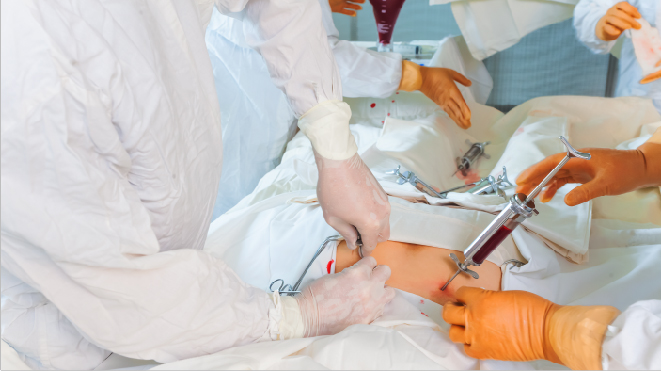Treatment outcomes:
Outcome is the result that is expected from the treatment. This varies from each individual depending on the stage of cancer, type of treatment given, age of the patient and over health of the patient. Survival rate is the percentage of people who survive the disease. It is usually referred to 5-year survival rate, which is, the number of people who survived cancer for more than 5 years of diagnosis out of every 100 patients diagnosed with it.

Following are the outcomes of each treatment used for pancreatic cancer along with their survival rates:
Chemotherapy:
The main aim of chemotherapy is treating metastasized pancreatic cancer. Chemotherapy is mainly used for cancer that cannot be removed by surgery. Even when all other treatments fail, a combination of chemotherapeutic drugs shows good results. Therefore, chemotherapy has a good survival rate. Chemotherapy given along with other treatments also has a high success rate.
Radiotherapy:
Radiation therapy kills the cancer cells with high energy X-rays. It aims in controlling the growth of cancer, and removing the cancer without surgery.
The survival rate after radiotherapy in the treatment of pancreatic cancer is low.
A recent study in 2017 has shown that patients who received a dose lesser than 45 Gy had a survival rate of 13 months, and those who received a radiation of 45-50 Gy had a survival rate of 21 months. The patients who received the highest radiation, that is, above 55 had a survival rate of 28 months.
Hence, higher dose of radiation increases the effectiveness of the treatment.
Surgery:
Surgeries in the treatment of pancreatic cancer aim at removing the tumours in the pancreas. These can be complicated and will need extra care.
Surgeries have high success rates in removing the tumours but low survival rate, because they cannot treat metastasized cancer. However, if the cancer has not spread much, surgery has a high survival rate.
The 5-year survival rate of surgery for patients whose tumours is less than 2 cm is more than 40%.
Survival rates by stage:
The survival rate usually refers to the five year survival rate that shows how many patients out of 100 live beyond five years after first being diagnosed by a specific cancer. It can be an indicator to understand the outlook of the patient based on the type and stage of cancer.
Survival rate for exocrine pancreatic cancer:
The 5-year survival rates of different stages of pancreatic cancer are:
Stage I: Stage I of pancreatic cancer is further of two stages, IA and IB, with the former having a survival rate of 14% and the latter about 12%.
Stage II: IIA and IIB are the stages of stage II of pancreatic cancer, having 7% and 5% survival rates respectively.
Stage III: The survival rate of Stage III of pancreatic cancer is 3%
Stage IV: 1% is the survival rate of Stage IV of pancreatic cancer.
Follow-up plan:
Post active treatment for pancreatic cancer also, the patient has to be checking his/her health regularly. This is to check for any repetition of cancer, manage with the side effects monitor overall health. The following is the follow up care plan for pancreatic cancer.
-
Developing a follow-up care plan:
This includes having a diet plan, planning of future appointments, list of physical and medical examinations. This plan helps the patients to get back to their regular life.
-
Regular monitoring of blood cell count:
In case of lowered number of blood cells, transfusion maybe be required which is why it is advised to regularly monitor the patient’s blood count.
-
Healthy diet as advised by a nutritionist:
Based on the person and his digestive tract acceptance, the patient has to choose food that he/she can consume.
-
Watching for recurrence of cancer:
On observing any symptoms or signs that show recurrence of the pancreatic cancer, next cycle of the treatment has to be started.
-
Managing long term side effects:
The patients will have to cope up with the long term side effects that these treatments come with. These have to be monitored by the following tests:
- Thyroid examinations
- Lung function
- Regular electrocardiograms (EKGs)
- Mammography
- Computed tomography (CT) scans
-
Keeping personal health record:
Patients will have to keep a detailed record of their medical history. This will be helpful for any further diagnosis or treatment in the future.
-
Care to be taken:
The follow up plan also includes a proper after care for the patient to follow:
- Regular check-ups with the doctor
- Having small healthy meals 6-8 times a day
- Staying hydrated
- Not working too hard
- Keep skin moisturized
- Take nourishment supplements
- Take anti sickness medication to prevent reduce weakness



